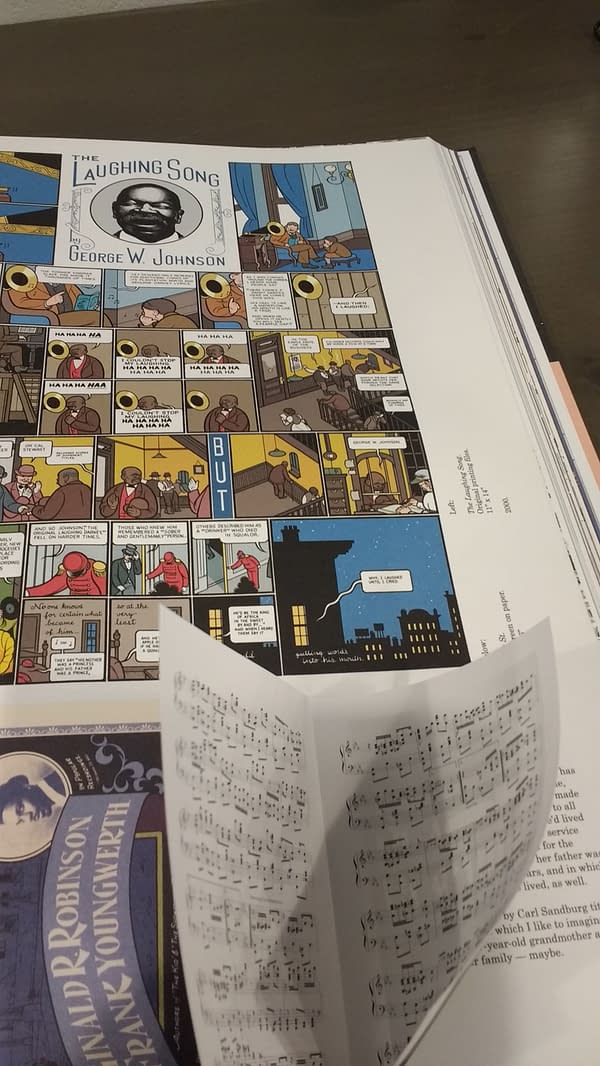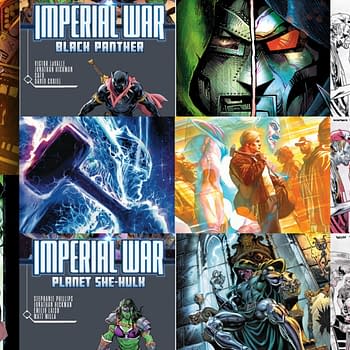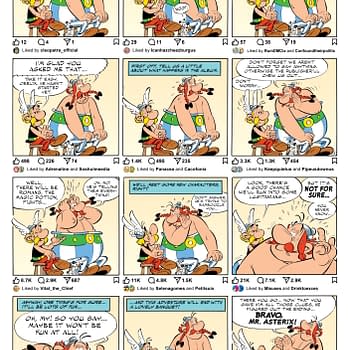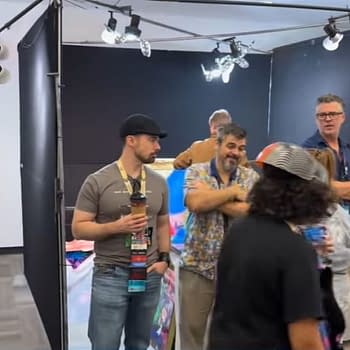Posted in: Comics | Tagged:
A Curation Of Influences: Chris Ware's Monograph
Monograph
noun
mä-nə-graf
1.a learned treatise on a small area of learning
2.a written account of a single thing
Greg Baldino writes,
It is no mere stylistic affectation that Chris Ware has utilized fine print in so many of his works. Where many artists wishing to convey the miniscule type found in the documents of our lives would simply reduce "Lorem ipsum dolor sit amet…" to just above the threshold of illegibility, Ware has instead written thousands of words of throwaway text. Text that is, on literal closer examination, no more throwaway than the forgotten observations and exchanges in our own daily lives.
Monograph is Chris Ware's self-examined life and career. Not intended as a celebration, by his own self-deprecatory standards, it is nonetheless a remarkable and at times breathtaking overview of his work. From his earliest cartoons at the University of Texas Austin newspaper to his format-redefining Building Stories, Ware pulls no punches with himself, but freely sings praise and thanks for thoe who have influenced, inspired, and supported him.
Just what do you know about Chris Ware? It's been my finding that if you're the kind of person who reads a book and decides to find out more about the author, what you know about Chris Ware is going to depend on whether he was being interviewed during the heyday of Acme Novelty Library, his comic series that never looked the same way twice, or after Jimmy Corrigan the Smartest Kid on Earth broke through into the literary scene like a George Herriman brick. And as someone who's followed Ware through both lives of his career, there's still swathes of stuff in here I never knew/ Which means that whichever reader you are, Monograph will enrich your understanding one of comics most radical innovators.
One of the freedoms that scope gives Ware is the space to talk about his non-comics projects. These range from his handmade wooden toys to his interest in ragtime, the latter of which led him to produce several issues of a journal called the Ragtime Ephemeralist. And of course, as the arbiter of his own oeuvre, Ware gets to flex his curatorial layout skills, picking and placing the pieces as he wants them to be received. It can be imagined, then as a catalog for an impossible exhibition–one that would have to include within itself his exhibition in celebration of the architect Louis Sullivan for the Chicago Cultural Center.
There is one thing Ware does in this book that in some ways throws down a gauntlet for future fine art presentations of comic work. Throughout the book are small facsimile copies of Ware's projects–some never before seen–fastened to the pages. This is something a lot of attempts at presenting comics art fails at; the individual pages were never meant to stand alone as artwork, that was never implicit in their design. An exhibition of Ware's contemporary Dan Clowes at the Museum of Contemporary Art in Chicago addressed this by having copies of Clowes' work in book and pamphlet form on hand in addition to his framed work. But in a bound volume reprinting a self-contained comic story or a consistent section of story works but does nothing other than reprint it. This feature in Monograph offers a new idea on how to curate comics in an analytic form without entirely divorcing it from its mode of comprehension.
In Monograph we have a celebration of the work and vision of one of comics most exemplary innovators, who in his rich history has sacrificed neither complexity nor accessibility in his pursuit of expression.
Monograph
Chris Ware
Rizzoli
$60.00
Greg Baldino was also never meant to stand alone as artwork, that was never implicit in his design. He writes and drinks coffee somewhere in Western Michigan.


 Monograph
Monograph












